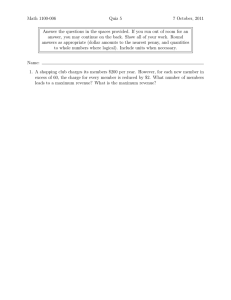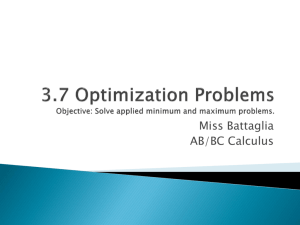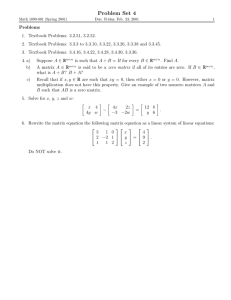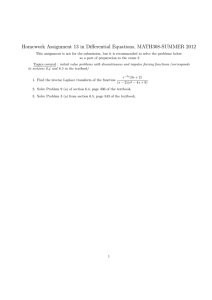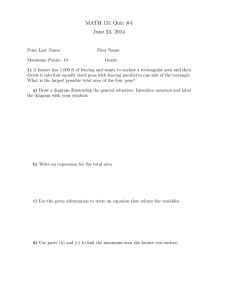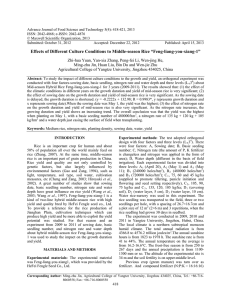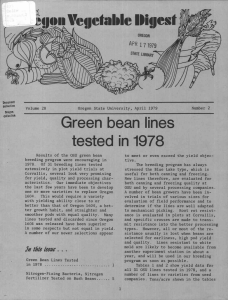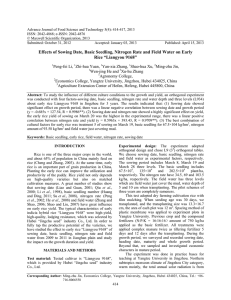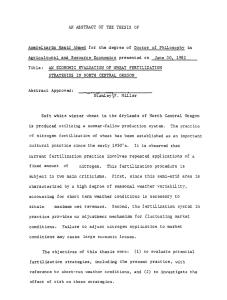8 Further applications of differentiation 8.1 Maximum-minimum problems
advertisement
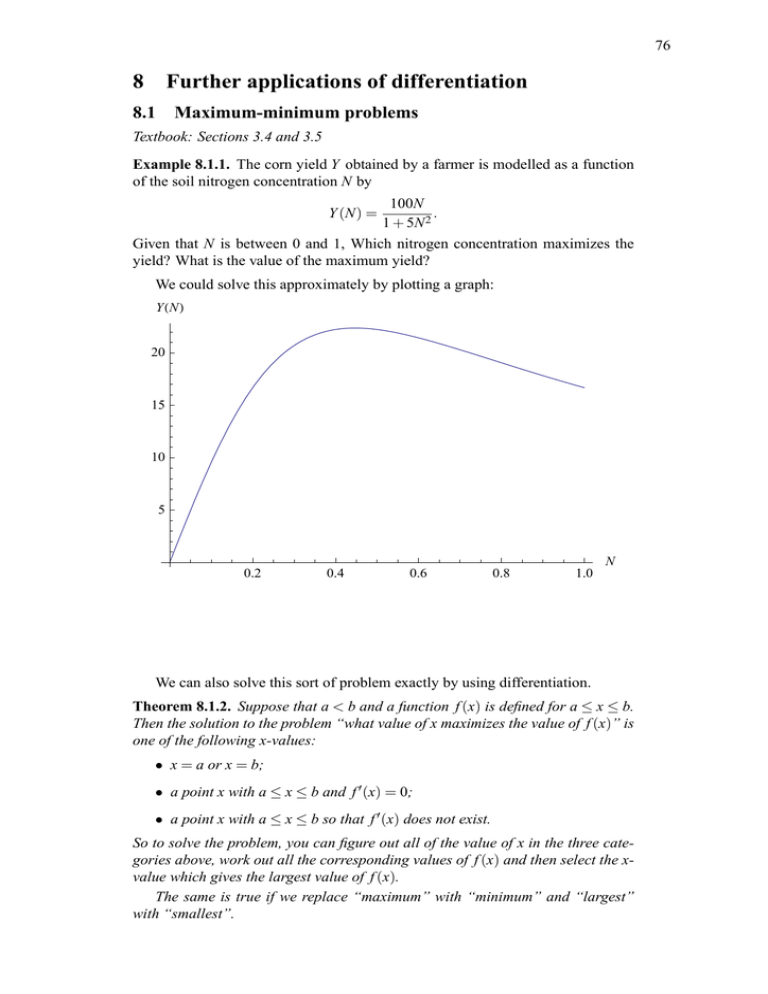
76 8 Further applications of differentiation 8.1 Maximum-minimum problems Textbook: Sections 3.4 and 3.5 Example 8.1.1. The corn yield Y obtained by a farmer is modelled as a function of the soil nitrogen concentration N by 100N . 1 + 5N 2 Given that N is between 0 and 1, Which nitrogen concentration maximizes the yield? What is the value of the maximum yield? Y (N) = We could solve this approximately by plotting a graph: YHNL 20 15 10 5 N 0.2 0.4 0.6 0.8 1.0 We can also solve this sort of problem exactly by using differentiation. Theorem 8.1.2. Suppose that a < b and a function f (x) is defined for a ≤ x ≤ b. Then the solution to the problem “what value of x maximizes the value of f (x)” is one of the following x-values: • x = a or x = b; • a point x with a ≤ x ≤ b and f ′ (x) = 0; • a point x with a ≤ x ≤ b so that f ′ (x) does not exist. So to solve the problem, you can figure out all of the value of x in the three categories above, work out all the corresponding values of f (x) and then select the xvalue which gives the largest value of f (x). The same is true if we replace “maximum” with “minimum” and “largest” with “smallest”. 77 Remark 8.1.3. Actually, this statement slightly untrue. For it to work, we need to ensure that f (x) is a nice function with no breaks in the graph (this is called the continuity of f (x)). But it’s good enough for our purposes. Now we can solve Example 8.1.1 exactly. Example 8.1.4. by ∗ In a chemical reaction A + B → AB, the reaction rate is given R(x) = 2(2 − x)(5 − x) where x is the concentration of AB. The reaction ceases when x = 2, so this equation is valid for x between 0 and 2. What concentration of AB maximizes the reaction rate? Example 8.1.5 (Textbook, Exercise 3.5.18). A rancher want to fence in a rectangular area to enclose livestock next to a river. If he has 120 m of fencing, what is the maximum area he can enclose? (He does not have to put fencing on the side by the river). Example 8.1.6 (Textbook, Exercise 3.5.2). Of the pairs of numbers whose sum is 70, find the pair with the maximum product. That is, maximize xy where x + y = 70. ∗ Examples 8.1.1 and 8.1.4 are adapted from the book Calculus for Biology and Medicine by Claudia Neuhauser, second edition.
